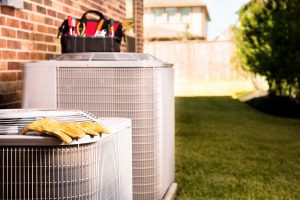 Summer may technically be over, but it’s never too early to start thinking about next year. If you think you may have to replace your air conditioning system before next summer starts, either because it’s too old or because it’s having a lot of problems, you have a number of options available to you. It’s best to closely consider each option, so that you have a good idea of which air conditioner type would meet your specific needs the best. Have a look at some of the more popular options below, in order to help you decide what would take the best care of your climate control next summer.
Summer may technically be over, but it’s never too early to start thinking about next year. If you think you may have to replace your air conditioning system before next summer starts, either because it’s too old or because it’s having a lot of problems, you have a number of options available to you. It’s best to closely consider each option, so that you have a good idea of which air conditioner type would meet your specific needs the best. Have a look at some of the more popular options below, in order to help you decide what would take the best care of your climate control next summer.
Central AC
Central air conditioning has been the standard for most homes in the country for decades, and for good reason. A central AC can apply a substantial amount of cooling to a home of almost any size, and do it without necessarily raising monthly operating costs through the roof. It may not be the flashiest or most cutting-edge cooling solution, but it’s very good at what it does. If your home already has the ductwork for it, or if you’re looking to make the switch from a decentralized system, a central air conditioner might be a great thing to install.
Heat Pumps
A heat pump is very similar to a central air conditioner, at least in terms of what it looks like. Two coils, one installed inside and one outside, take turns evaporating and condensing refrigerant to move heat out of the home. The added bonus is that heat pumps can reverse refrigerant flow, switching between heating and cooling modes as needed. If you’re wondering, is a mini-split a heat pump? It is! This versatility makes heat pumps a great year-round option.
If you’re looking to install a heat pump, you could even do it now and make use of the heating portion instead of waiting for next summer! Heat pumps are more energy efficient than most combustion-based heating systems, as they do not need to burn fuel to generate heat.
Ductless Systems
With as many advantages as both central AC and heat pump systems offer, they both have to deal with two disadvantages. The first is that they have to deal with duct leaks which rob the average centralized forced air system of up to 30% of its output. The second is that they can only cool the entire home, or none of it, under normal circumstances. There is only one thermostat for each system. Ductless mini split systems remove those two disadvantages.
A ductless mini split system installs up to four indoor cooling units, one in each room, and each has its own thermostat. Each of these units only cools the room in which they are installed. However, each unit also has its own thermostat. This allows it to operate separately from the rest of the system, which both saves energy and increases convenience. Since the system doesn’t rely on ducts, it avoids common energy losses from leaks and improves efficiency. If you’re weighing your options, consider the benefits of installing a ductless system to enjoy tailored climate control and energy savings.
Ductless systems are also heat pumps, so they offer both heating and cooling functions, making them a versatile choice. However, like any system, they require upkeep. Learn more about common repair needs with ductless systems to understand potential issues and how to address them early, ensuring your system remains reliable throughout the year.
Comfy Heating & Air Conditioning Inc. offers air conditioning installation services in Oakland, CA. Contact us today for an appointment with one of our technicians.
